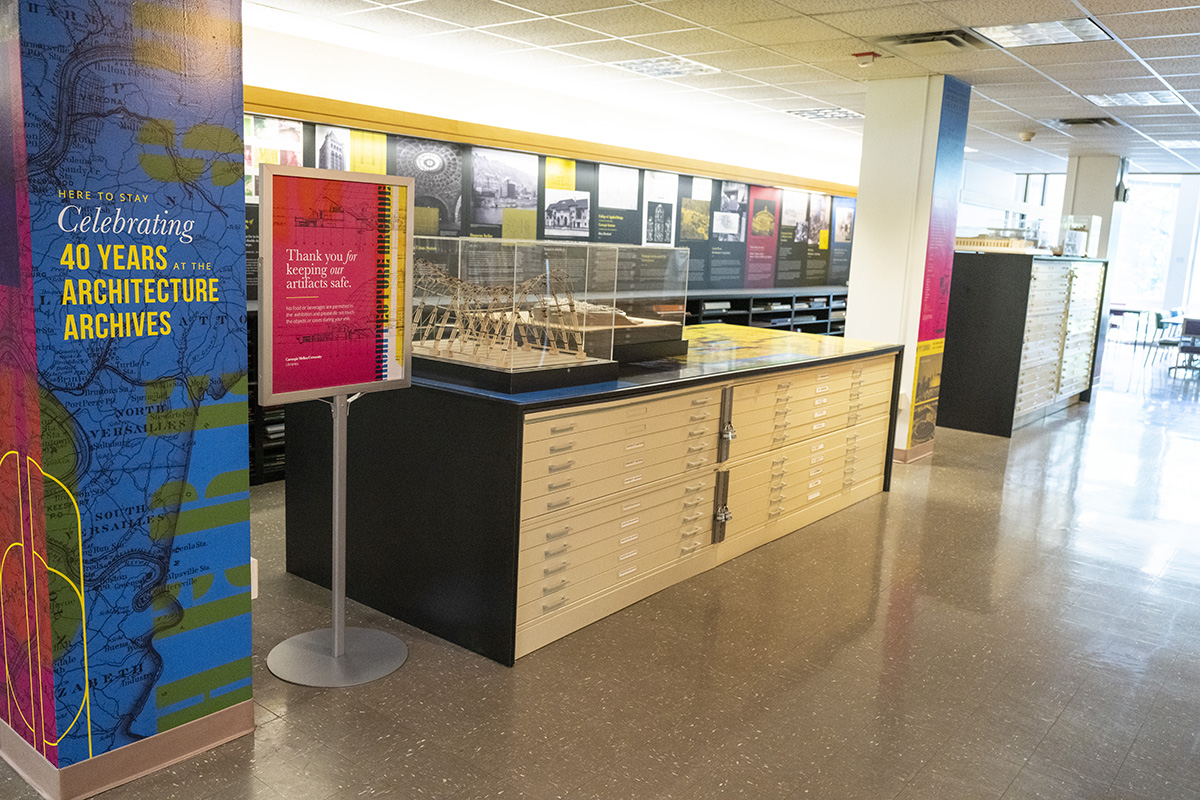
“Here to Stay: Celebrating 40 Years at the Architecture Archives 1984-2024” is divided into three phases representing the development of Pittsburgh's built environment: exploration, ideas and building.
The Carnegie Mellon University Architecture Archives exhibition, “Here to Stay: Celebrating 40 Years at the Architecture Archives 1984-2024,” celebrates the 40th anniversary of the archives, which was founded to create, conserve, and promote the rich history of Pittsburgh’s buildings and tell part of the story of this dynamic city.
“We wanted to re-introduce people to our archives,” said Arts and Humanities Librarian and exhibit curator Lynn Kawaratani. “There is an extraordinary architectural history in Pittsburgh, but some of it gets lost as the city transforms. The only way to really access that ‘lost’ history is through the drawings, models and documents that still exist.”
The Exhibit
The exhibit explores the city’s history by communicating ideas and information between clients, architects and builders in the drawings and other documents preserved by the archives. These architectural records are increasingly useful as documentation of an irretrievable past and as resources that allow us to understand our surroundings more informally.
Kawaratani divided the exhibit into three distinct phases, which mirror how architects work on projects. There is an exploration through sketchbooks and photography, ideas highlighting design concepts and models, and buildings showcasing completed architecture, including one no longer standing structure.
Associate Director, Creative Heidi Wiren Kebe, the exhibit’s art director, developed the visual language to help illustrate those three phases.
The exhibit includes some of the oldest—Allegheny Courthouse and Jail from 1883—and the newest—Spring Carnival Gateway from 2023—Pittsburgh structures. Along with the historical structures, the exhibit includes some of the more well-known local landmarks, such as the City Steps, Incline and the mirrored spires of PPG Place.
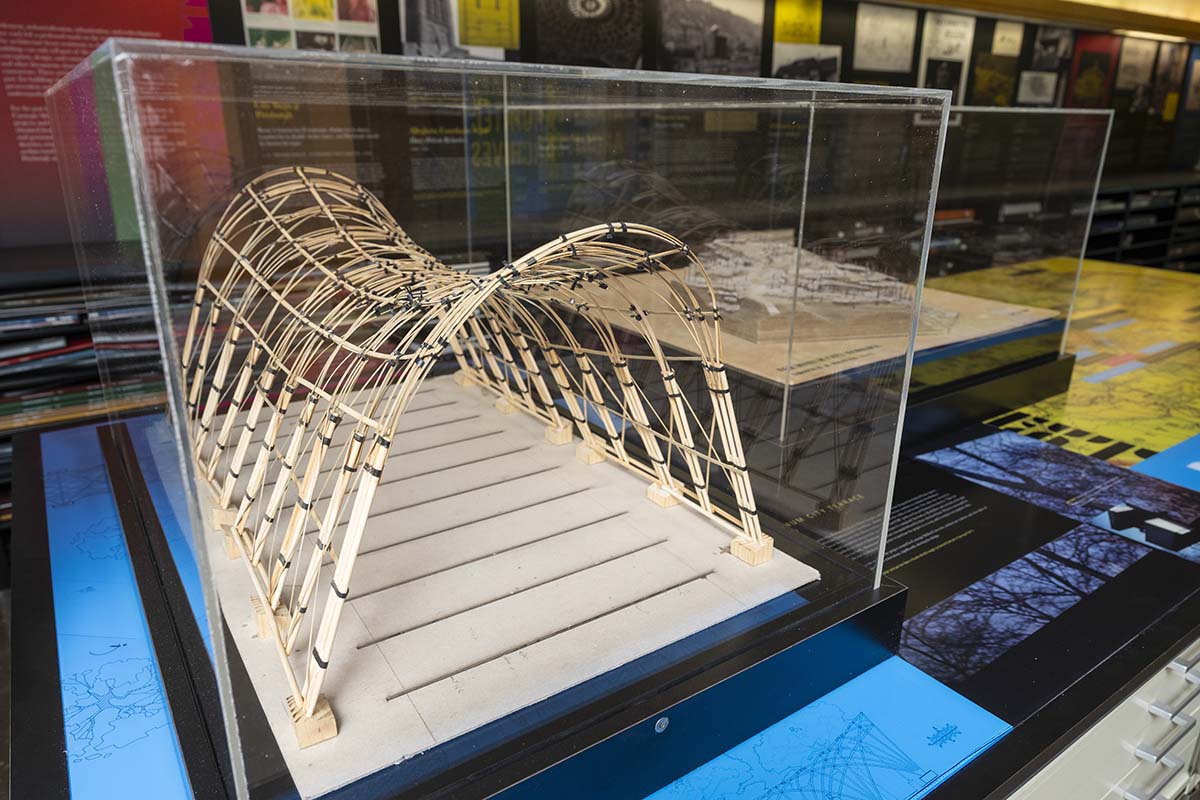
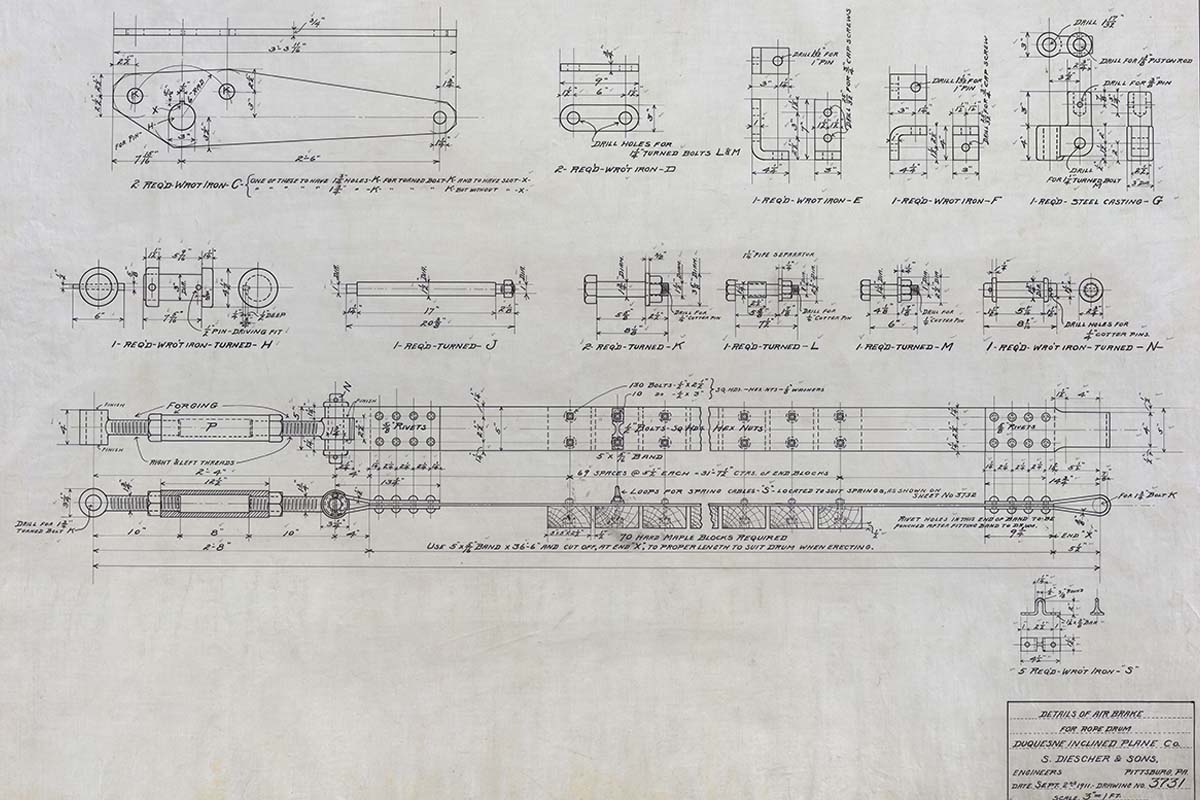
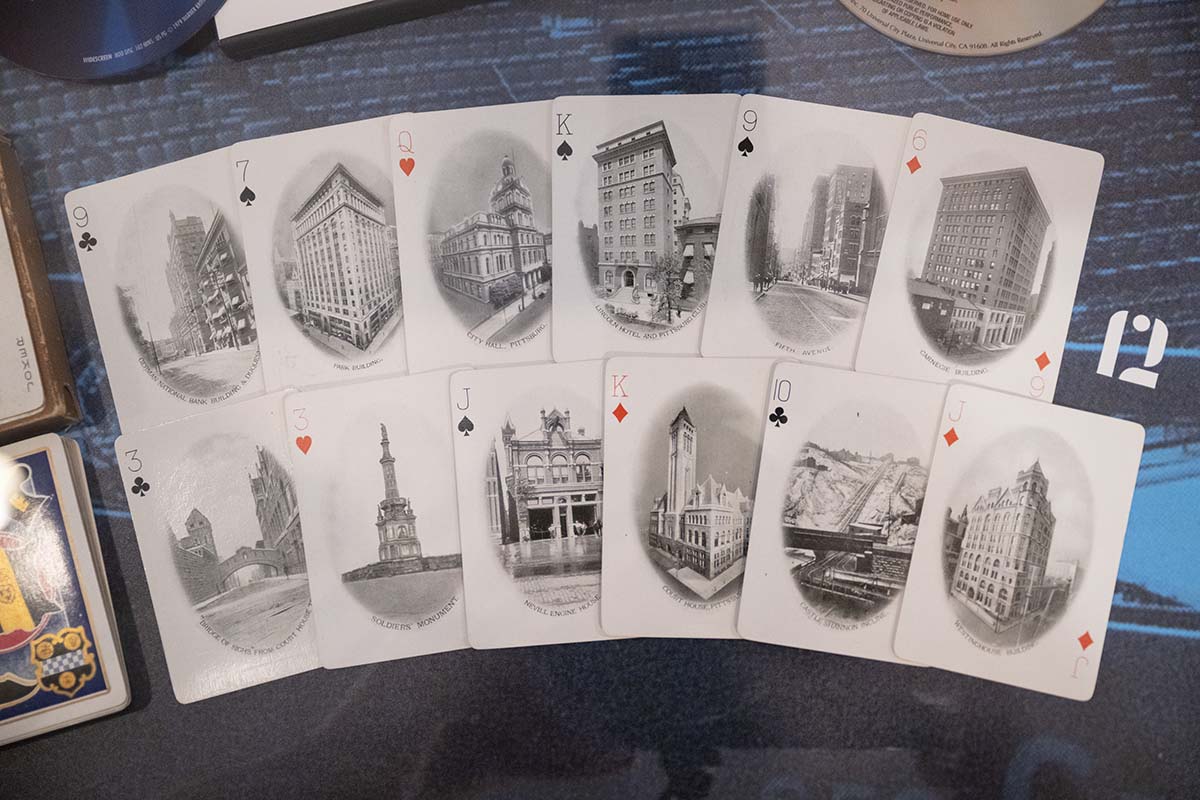
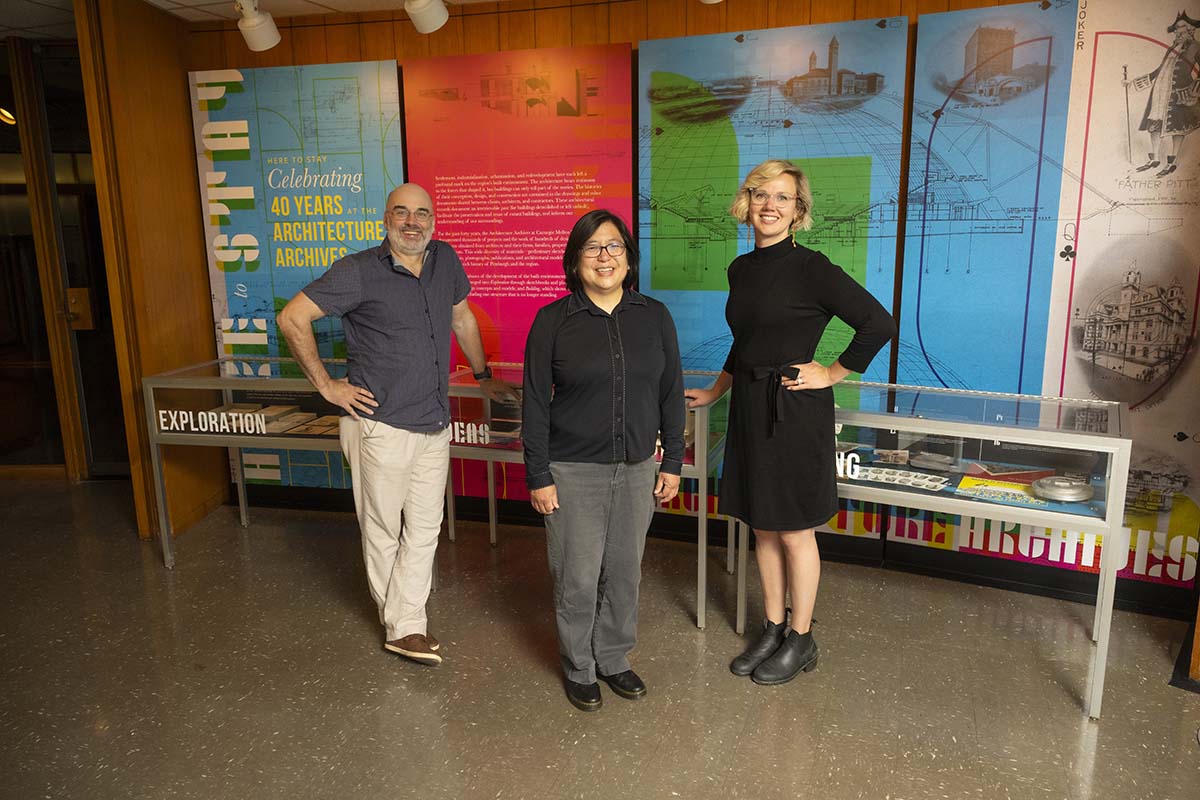
The University Libraries held an opening reception on May 23, 2024 on the fourth floor of Hunt Library. Before the unveiling, Helen and Henry Posner, Jr. Dean of the University Libraries Keith Webster moderated a panel about the exhibit and the future of the archives. The discussion included Martin Aurand, Principal Librarian Emeritus at CMU Libraries, Gerard Damiani, Associate Professor in the School of Architecture, and Kawaratani.
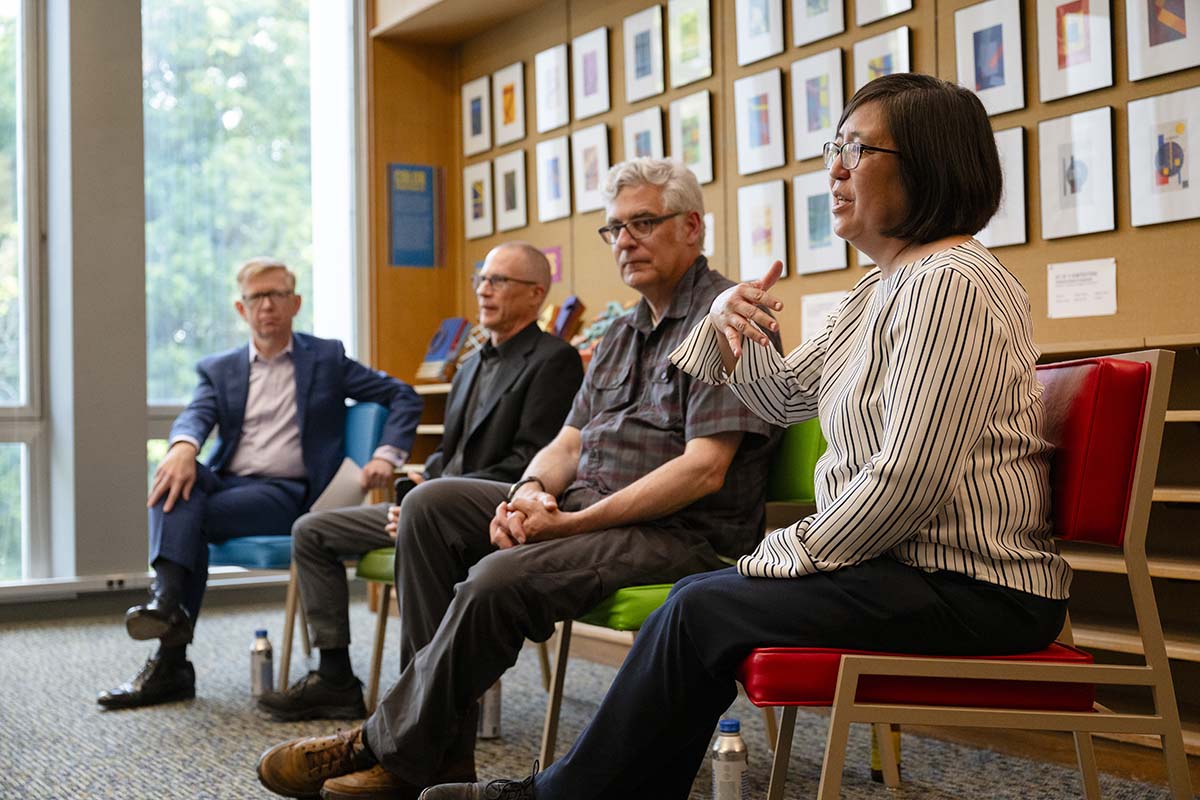
The Next 40 Years
The Architecture Archives was founded in 1984 by Fine Arts Librarian Henry Pisciotta and Professor Richard Cleary as a collaborative project of Carnegie Mellon's University Libraries and School of Architecture.
Today, the archives continue to collect, conserve and promote the use of architectural records that document the architects and architecture of Pittsburgh and the region. The Architecture Archives currently include thousands of drawings and blueprints, extensive files of manuscripts and photographs, and a number of architectural models.
Kawaratani hopes to expand that original mission to include more than sketches and models.
“There is a big community movement to save Pittsburgh’s history and the Architecture Archives has become a central hub for that,” she said. “I hope to increase representation in our collection, include new voices of the users of the spaces through oral history interviews and expand access through our online digital repository.”
The exhibit, on the fourth floor of Hunt Library, will be on display from May 23, 2024 through June 1, 2025. For more information, visit the exhibit’s website or the Architecture Archives.
by Brad King, Anniversary Exhibits and Publishing Managing Editor
